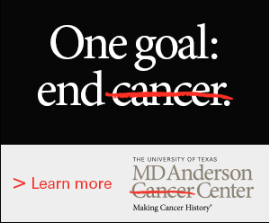 Researchers at The University of Texas MD Anderson Cancer Center and the Fred Hutchinson Cancer Research Center, Seattle, have published their results on the Prostate Cancer Prevention Trial, whereby healthy men actively participating in all the steps of the trial are most likely to undergo a biopsy.
Researchers at The University of Texas MD Anderson Cancer Center and the Fred Hutchinson Cancer Research Center, Seattle, have published their results on the Prostate Cancer Prevention Trial, whereby healthy men actively participating in all the steps of the trial are most likely to undergo a biopsy.
The study, entitled “Factors Associated with Adherence to an End-of-Study Biopsy: Lessons from the Prostate Cancer Prevention Trial (SWOG-Coordinated Intergroup Study S9217)” and published in the Cancer Epidemiology, Biomarkers and Prevention journal, analyzed patients undergoing a 7-year randomized, double-blind, placebo-controlled trial to assess the efficacy of finasteride, a synthetic drug for the treatment of benign prostatic hyperplasia, in the prevention of prostate cancer.
The researchers designed a systematic model to identify factors associated with men adhering to the end-of-study (EOS) biopsy requirement of the trial, an invasive procedure that histologically detects whether or not cancer cells are present in the prostate gland. Assessed factors included psychosocial outcomes, participant health status, participant adherence, and characteristics of the clinical sites at which the study was conducted.
“Our study is unique because it evaluated factors prospectively associated with an invasive biopsy for a cancer prevention trial, not a cancer treatment trial,” Ellen R. Gritz, Ph.D., chair of Behavioral Science at MD Anderson, and lead author on the study said in an MD Anderson press release.
The prevention trial was coordinated by SWOG, a cancer research cooperative group designing and conducting multidisciplinary clinical trials, and involved 219 different sites and more that 18,000 men. Moreover, participants were given educational materials regarding both the study and biopsy procedures, and were asked to regularly attend their appointments throughout the trial.
”The biopsy provided the biological specimens that could be tested to see if a man’s prostate cells were cancer-free after seven years on the trial,” Carol Moinpour, Ph.D., of the Fred Hutchinson Cancer Research Center added in the press release.
The results demonstrated that patients were more likely to adhere to the EOS biopsy if one year prior to the biopsy they were adherent to the study drug, kept appointments, underwent required tests and were in good health.
Furthermore, men who had an EOS biopsy were more likely to start finasteride treatment (84%), undergo a digital rectal exam or PSA test (98%) when compared to patients who were not biopsied (47% and 75% respectively).
“We also found that participants were more likely to adhere to biopsies if the study site that recruited the participant enrolled more than 200 participants and/or had resources for conducting activities to encourage continued participation in the trial,” added Dr. Gritz.
Understanding adherence behaviors in clinical trial patients is a powerful tool to identify which participants are at risk for noncompliance to a study requirement, creating model adherence intervention strategies that can improve the development of future trials.
The research was funded by the Public Service Health from the Department of Cancer Prevention, National Cancer Institute (NCI), NIH, Department of Health and Human Services.


